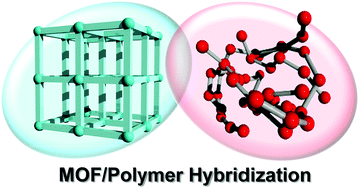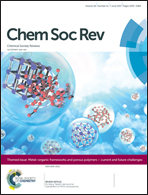Hybridization of MOFs and polymers
Abstract
Metal–organic frameworks (MOFs) have received much attention because of their attractive properties. They show great potential applications in many fields. An emerging trend in MOF research is hybridization with flexible materials, which is the subject of this review. Polymers possess a variety of unique attributes, such as softness, thermal and chemical stability, and optoelectrical properties that can be integrated with MOFs to make hybrids with sophisticated architectures. Hybridization of MOFs and polymers is producing new and versatile materials that exhibit peculiar properties hard to realize with the individual components. This review article focuses on the methodology for hybridization of MOFs and polymers, as well as the intriguing functions of hybrid materials.

- This article is part of the themed collection: Metal-organic frameworks and porous polymers – current and future challenges


 Please wait while we load your content...
Please wait while we load your content...